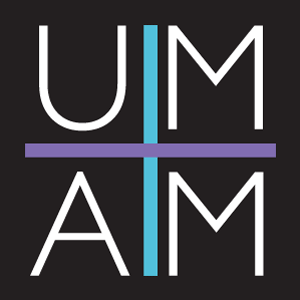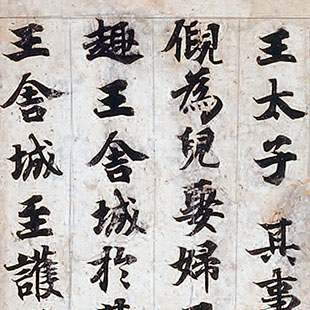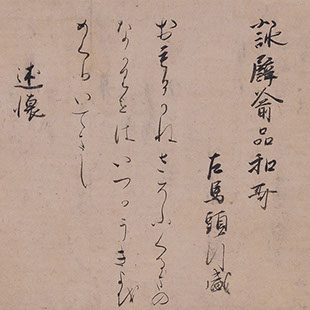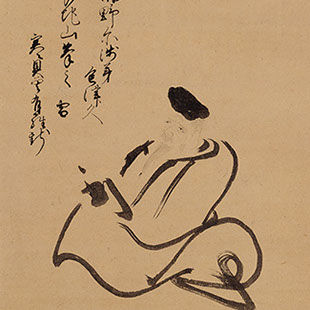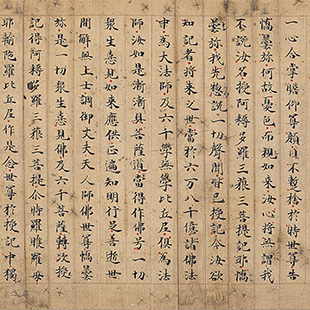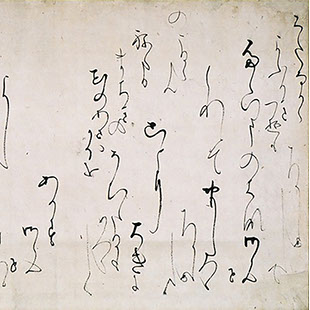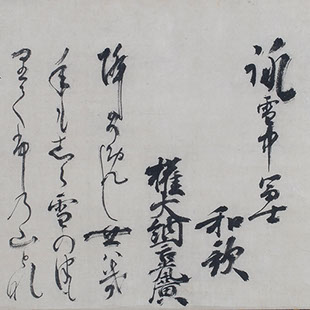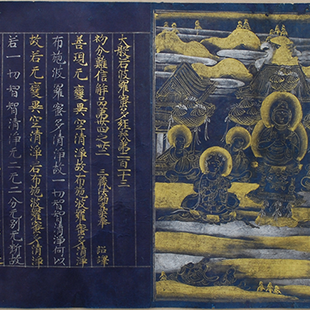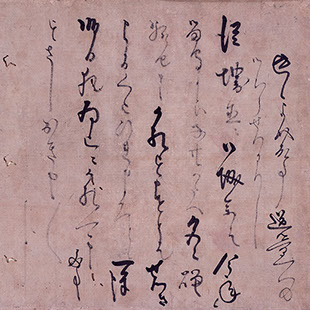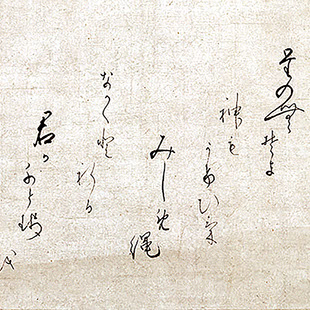Collection

Calligraphy
Calligraphy is about more than just the message contained in the writing. The spirit and aesthetic sensibilities of the calligrapher are also conveyed in the type of paper used, the arrangement of the characters, the ink shadings, and the writing style. This museum has a diverse collection of calligraphic works, from lavishly decorated sutras to letters written by emperors, nobles and samurai.
Attributed to Emperor Shomu: Segment of the ‘Sudatta Raises a Monastery’ Section of the Sutra of the Wise and the Foolish (Ojomu) Nara Period, 8th Century
Taira no Yukimori: Two Waka Poems on the Lotus Sutra Heian Period, 12th Century
Volume 5 of the Myohorenge-kyo (Lotus Sutra) Paper with bird pattern Heian Period, 11th Century
Emperor Go-Kashiwabara: Letters Muromachi Period, end of 15th–start of 16th Century
Shobunrishinge-hon, Daihannyaharamitta-kyo (Mahaprajnaparamita Sutra), Volume 213 Heian Period, 12th Century Gold and silver on dark-blue paper
Sen no Rikyu: Entited ‘tadaima no hana’ Letter to Shiba Kenmotsu Muromachi Period, 16th Century
Emperor Goyozei: Image of Kakinomoto no Hitomaro with Inscription Azuchi-Momoyama Period, end of 16th–start of 17th Century
Karasumaru Mitsuhiro: Waka Poem – ‘Snow-capped Mount Fuji’ Edo Period, 17th Century
Empress Meisho: Imperial Letter with Poem Draft Entitled ‘Please’ Edo period, 17th century
Copyright © 2018 Umi-Mori Art Museum all rights reserved.
